In today’s global marketplace, sea freight shipping has become an indispensable method for transporting goods from manufacturing hubs like China to key destinations such as Belgium. As businesses seek cost-effective and reliable solutions to meet their import needs, understanding the intricacies of sea freight is essential. From the various shipping methods available to the documentation required, this guide will delve into the essential components of sea freight shipping, helping you navigate the complexities involved and optimize your logistics operations for successful international trade.
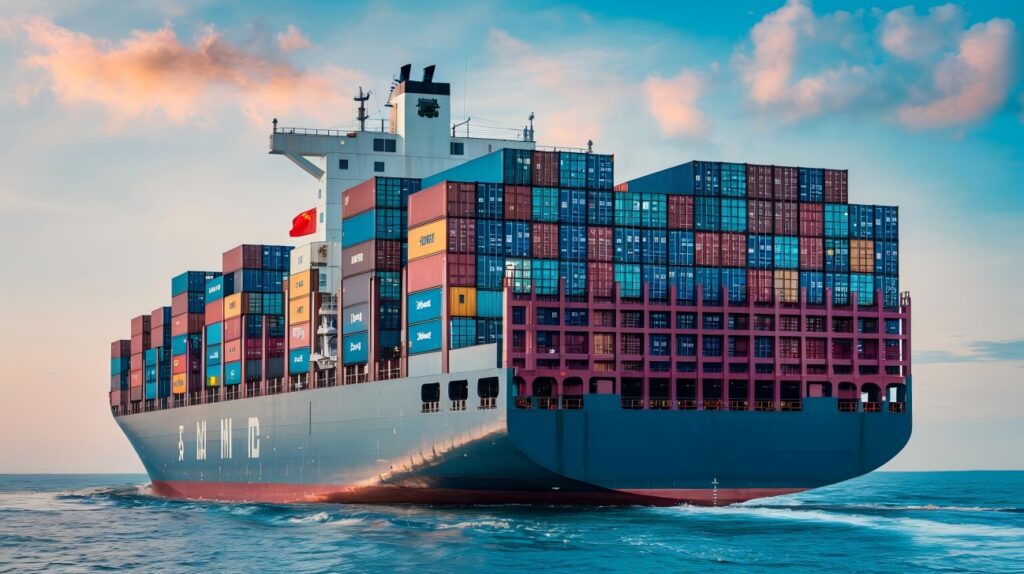
Understanding Sea Freight Shipping From China to Belgium
Sea freight shipping refers to the transport of goods via ocean vessels, utilizing large cargo ships that can carry thousands of containers filled with various commodities. This method is preferred for its cost-effectiveness, especially for bulk shipments.
Key Characteristics of Sea Freight Shipping:
- Large Capacity: Cargo ships can carry immense volumes, making them ideal for businesses looking to import goods in bulk.
- Cost-Effective: While transit times may be longer than air freight, sea freight offers a more economical solution for large shipments.
- Environmental Impact: Shipping by sea generally has a lower carbon footprint per ton of cargo compared to other modes of transportation.
Benefits of Sea Freight from China to Belgium
The advantages of choosing sea freight for shipping goods from China to Belgium are multifaceted and can significantly impact a company’s bottom line.
1. Cost Efficiency
- Lower Freight Rates: Sea freight tends to have lower per-unit shipping costs compared to air freight, especially for large volumes.
- Bulk Shipping Discounts: Importers can negotiate better rates for large orders, further reducing overall costs.
2. Versatility in Cargo
- Diverse Cargo Capability: Sea freight can accommodate a wide range of goods, from raw materials to finished products.
- Specialized Ships: Certain vessels are equipped for specific types of cargo, including hazardous materials, perishables, and oversized items.
3. Reliability
- Established Routes: Maritime shipping routes are well-defined, and the schedules are often more dependable than those of air freight.
- Infrastructure: Ports in Belgium, such as the Port of Antwerp, are well-equipped to handle large volumes of cargo, ensuring smoother operations.
Types of Sea Freight Services
When deciding on sea freight shipping from China to Belgium, it’s important to understand the various services available:
1. Full Container Load (FCL)
- Definition: FCL involves booking an entire container for a single shipment, which is ideal for larger volumes of goods.
- Benefits:
- Reduced risk of damage, as the container is sealed.
- Faster loading and unloading times, as the ship is not waiting on additional cargo.
2. Less Than Container Load (LCL)
- Definition: LCL is used when the shipment does not fill a whole container. Multiple shippers share the container space.
- Benefits:
- Cost-effective for small shipments.
- Flexibility in shipping smaller quantities.
3. Customized Freight Solutions
- Definition: Some freight forwarders offer tailored services, including door-to-door shipping, customs clearance, and insurance services.
- Benefits:
- Enhanced convenience and support throughout the shipping process.
- Ability to adapt the service according to unique shipping needs.
Preparing for Your Sea Freight Shipment
Successful sea freight shipping requires meticulous preparation, ensuring all logistical elements are covered prior to shipment.
Calculating Cargo Volume and Weight
Accurate calculations of cargo volume and weight are critical to determining the shipping costs and selecting the right container type.
- Volume Calculation:
- Measure the dimensions of your products to calculate their cubic volume.
- Weight Calculation:
- Consider the total weight of the goods, including packaging, for accurate freight pricing.
Choosing Between FCL (Full Container Load) and LCL (Less Than Container Load)
Selecting the appropriate shipping method will depend on the volume of goods being transported:
| Shipping Method | Ideal For | Advantages | Disadvantages |
|---|---|---|---|
| FCL | Large shipments | Lower cost per unit, faster transit | Higher upfront cost |
| LCL | Smaller shipments | Economical for small loads, flexible options | Longer transit time and potential delays |
Selecting the Right Container Size
Choosing the right container size is essential for optimizing shipping costs and ensuring the safety of the goods:
- Standard Container Sizes:
- 20-foot container: Suitable for small to medium shipments.
- 40-foot container: Ideal for larger shipments, providing double the capacity of a 20-foot container.
Considerations for Container Selection:
- Ensure the container size aligns with your cargo volume calculations.
- Factor in the type of goods and their packaging to determine the best fit.
For further assistance in navigating the complexities of international shipping, consider partnering with Dantful International Logistics, a provider dedicated to delivering highly professional, cost-effective, and high-quality one-stop international logistics services for global traders. Explore our services to experience seamless door-to-door shipping, customs clearance, and more.
Dantful International Logistics Services:
- Dantful Ocean Freight Services
- Air Freight From China
- Amazon FBA Freight Forwarding
- WAREHOUSE Services
- One-Stop Customs Clearance Solution
- Cargo Insurance Services in China
- DDP Shipping Services By Dantful Logistics
- Out of Gauge Cargo Transportation Shipping Services
Essential Documents for Sea Freight From China to Belgium
Navigating the complexities of international trade requires thorough documentation, particularly when shipping goods from China to Belgium via sea freight. Accurate and timely documentation not only ensures compliance with regulatory requirements but also facilitates smooth customs clearance and successful delivery. Here’s a look at the essential documents required:
1. Commercial Invoice
The commercial invoice is a fundamental document that outlines the transaction details between the buyer and seller. It typically includes:
- Description of Goods: Detailed information about the items being shipped.
- Value of Goods: The total cost of the merchandise, which is crucial for customs valuation.
- Terms of Sale: Payment terms and delivery conditions.
2. Packing List
The packing list provides a detailed account of the contents within each package or container. It is essential for:
- Customs Inspection: Helps customs authorities verify the shipment contents against the commercial invoice.
- Receivers: Allows the receiver in Belgium to confirm they have received all items.
3. Bill of Lading (BOL)
The bill of lading serves multiple purposes in the shipping process:
- Contract of Carriage: It acts as a legal document between the shipper and the carrier, outlining the agreement for transporting goods.
- Receipt of Goods: Confirms that the carrier has received the cargo in good condition.
- Title to Goods: The BOL can be transferred, making it a negotiable instrument.
4. Certificate of Origin
The certificate of origin is a document that certifies the country where the goods were manufactured. Key points include:
- Trade Agreements: It may be required to determine eligibility for preferential tariff rates under trade agreements.
- Authenticity: This document can help prove authenticity and origin during customs clearance.
5. Customs Declaration Forms
Customs declaration forms are required for both export and import processes:
- Export Declaration: Necessary for clearance in China, detailing what is being exported and ensuring compliance with local regulations.
- Import Declaration: Required upon arrival in Belgium, providing information to customs authorities to assess duties and taxes.
The Sea Freight Shipping Process Step-by-Step
Understanding the step-by-step process of sea freight shipping from China to Belgium is essential for a seamless experience.
1. Obtaining a Freight Quote and Booking
Providing Shipment Details to the Freight Forwarder
Once you decide to ship, the first step involves providing your freight forwarder with essential shipment details, including:
- Type of Goods: Description and specifications.
- Volume and Weight: Calculated dimensions and total weight.
- Destination: Exact delivery address in Belgium.
Agreeing on Shipping Terms and Rates
Discuss and agree on important factors such as:
- Shipping Method: FCL or LCL?
- Payment Terms: How and when the payment will be made.
- Insurance Options: Whether to insure the cargo and the extent of coverage.
Confirming the Booking
After finalizing the details, ensure to receive a confirmation from the freight forwarder that includes the booking reference number and shipment timeline.
2. Cargo Pick-Up and Delivery to the Port
Arranging for Cargo Pick-Up from the Supplier
Coordinate with your supplier in China to schedule the pickup of your goods. Confirm the delivery timeline to ensure timely transport to the port.
Transporting the Goods to the Port of Departure in China
The freight forwarder will handle the transportation, ensuring the cargo is delivered to the designated port for loading.
3. Export Customs Clearance in China
Submitting Required Documents
Prepare and submit the necessary documentation for customs clearance, including the commercial invoice and packing list.
Paying Export Duties and Taxes
Ensure any applicable export duties and taxes are paid to comply with Chinese regulations.
4. Loading and Ocean Transportation
Loading the Cargo onto the Vessel
Once cleared, the cargo is loaded onto the designated vessel. The freight forwarder typically oversees this process.
Transit Time from China to Belgium
The typical transit time for sea freight from China to Belgium ranges from 25 to 40 days, depending on the shipping route and weather conditions.
5. Import Customs Clearance in Belgium
Submitting Import Documents
Upon arrival in Belgium, submit the necessary import documents, including the bill of lading and customs declaration forms.
Paying Import Duties and Taxes
Be prepared to pay import duties and taxes, which will be calculated based on the declared value of the goods.
6. Cargo Unloading and Delivery to the Final Destination
Unloading the Cargo at the Port of Arrival in Belgium
After customs clearance, the cargo is unloaded at the port, ready for final delivery.
Arranging for Final Delivery to Your Warehouse or Facility
Coordinate with the freight forwarder for the transportation of the goods from the port to your warehouse or facility in Belgium.
You may be interested in the following related articles:
- Finding the Best Freight Forwarder from China to Paraguay
- Everything You Need to Know About Door to Door Shipping from China to Cameroon
- Tips to Find the Cheapest Shipping Company from China to Tanzania
- How to Choose the Cheapest Shipping Company from China to Angola
- The Ultimate Guide to Choosing a Freight Forwarder from China to Bolivia
- Container Shipping Costs from China to Nigeria: What You Need to Know
Challenges of Sea Freight
While sea freight is a widely used method for international shipping, it is not without its challenges.
Longer Transit Times: Planning for Delays
One of the primary challenges associated with sea freight is longer transit times compared to air freight. Businesses should plan accordingly, considering potential delays due to weather, port congestion, or customs inspections.
Weather-Related Risks: Ensuring Cargo Safety
Severe weather can impact shipping schedules and cargo safety. It’s essential to select a reliable freight forwarder who can provide real-time updates and contingency plans to mitigate risks associated with adverse weather conditions.
Tips for a Smooth Sea Freight Experience
To facilitate a seamless sea freight experience, consider the following tips:
Choosing a Reliable Freight Forwarder
Select a reputable freight forwarder, such as Dantful International Logistics, known for their expertise in managing door-to-door shipping and customs clearance procedures. A reliable partner will ensure compliance and help navigate potential challenges effectively.
Packing and Labeling Your Cargo Properly
Proper packing minimizes damage risks during transit. Ensure that all items are securely packed and clearly labeled, including handling instructions and destination details.
Tracking Your Shipment During Transit
Utilize tracking services provided by the freight forwarder to monitor your shipment’s status. This transparency allows for timely updates and better planning for receipt.
Preparing for Potential Delays or Unexpected Events
Anticipate and prepare for potential delays, whether due to customs inspections, weather conditions, or logistical issues. Having contingency plans in place can help mitigate the impact of these challenges on your supply chain.
By understanding the essential documentation and processes involved in sea freight from China to Belgium, businesses can improve their logistics operations and enhance their overall shipping experience. For further assistance, explore the comprehensive services provided by Dantful, offering tailored solutions for your international shipping needs.
FAQs
1. What is sea freight shipping?
Sea freight shipping refers to the transportation of goods via ocean vessels. It is an economical option for large shipments and is widely used for imports from manufacturing hubs like China.
2. What are the benefits of using sea freight from China to Belgium?
The primary benefits include cost efficiency, versatility in cargo, and reliability. Sea freight offers lower freight rates, the ability to ship a wide range of goods, and well-established maritime routes.
3. What documents are required for sea freight shipping?
Essential documents include:
- Commercial Invoice: Outlines transaction details.
- Packing List: Details the contents of each package.
- Bill of Lading (BOL): Serves as a contract of carriage and receipt of goods.
- Certificate of Origin: Certifies the country of manufacture.
- Customs Declaration Forms: Required for import and export clearance.
4. How do I choose between Full Container Load (FCL) and Less Than Container Load (LCL)?
- FCL is ideal for large shipments and offers faster transit times and reduced risk of damage, while LCL is more economical for smaller shipments but may result in longer transit times due to shared container space.
5. What is the typical transit time for sea freight from China to Belgium?
The typical transit time ranges from 25 to 40 days, depending on shipping routes and weather conditions.
6. How can I ensure a smooth sea freight experience?
To ensure a smooth experience, consider:
- Choosing a reliable freight forwarder like Dantful International Logistics.
- Properly packing and labeling your cargo.
- Tracking your shipment during transit.
- Preparing for potential delays or unexpected events.
7. What should I do if my shipment is delayed?
Be prepared for delays due to customs inspections, weather, or logistics issues. Having contingency plans and maintaining communication with your freight forwarder can help manage the situation effectively.
For any further inquiries or assistance with door-to-door shipping, customs clearance, or tailored freight solutions, consider reaching out to Dantful International Logistics for expert support.

Young Chiu is a seasoned logistics expert with over 15 years of experience in international freight forwarding and supply chain management. As CEO of Dantful International Logistics, Young is dedicated to providing valuable insights and practical advice to businesses navigating the complexities of global shipping.
The other language versions of this article
- دليل خطوة بخطوة للشحن البحري من الصين إلى بلجيكا
- Stap-voor-stap handleiding voor zeevracht van China naar België
- Guide étape par étape du fret maritime de la Chine vers la Belgique
- Schritt-für-Schritt-Anleitung für Seefracht von China nach Belgien
- Guida passo passo al trasporto marittimo dalla Cina al Belgio
- Guía paso a paso para el transporte marítimo de China a Bélgica
- Guia passo a passo para frete marítimo da China para a Bélgica
- Пошаговое руководство по морским грузоперевозкам из Китая в Бельгию
- Çin’den Belçika’ya Deniz Taşımacılığına Adım Adım Kılavuz

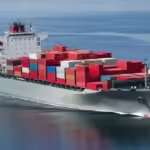




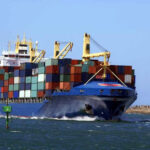


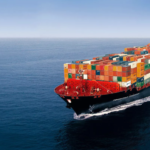
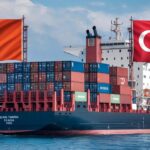
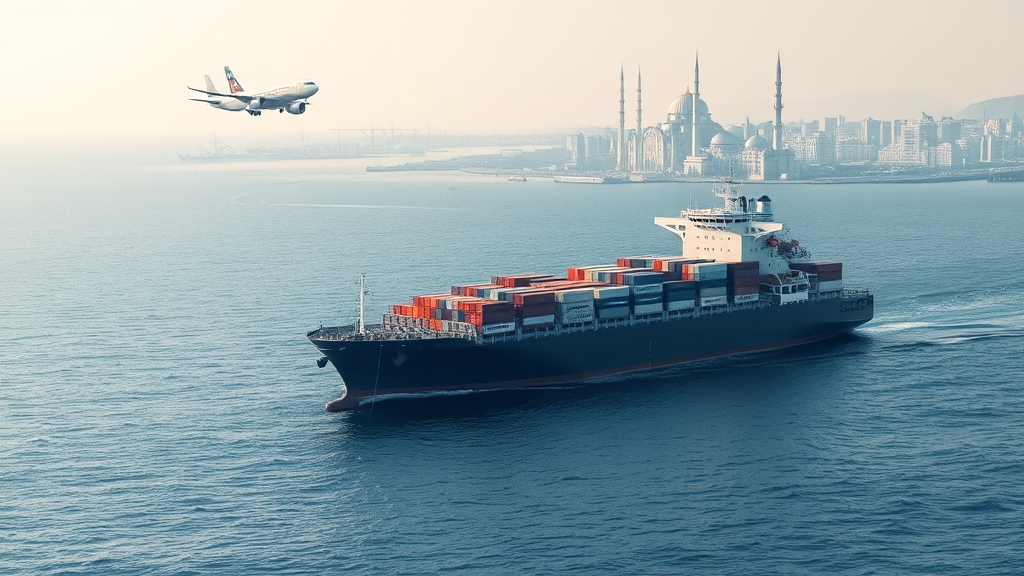



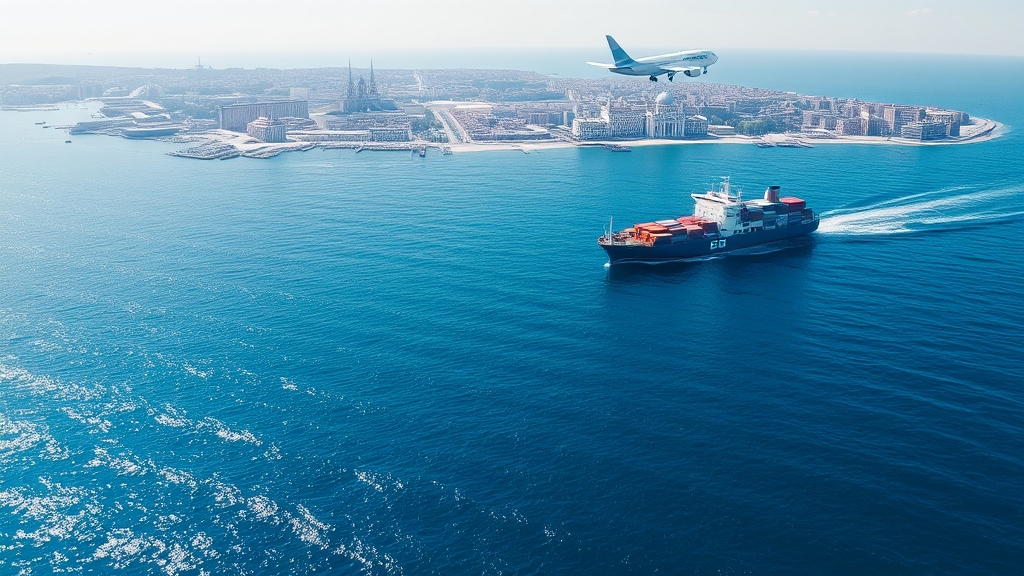





 Afrikaans
Afrikaans Shqip
Shqip አማርኛ
አማርኛ العربية
العربية Հայերեն
Հայերեն Azərbaycan dili
Azərbaycan dili Euskara
Euskara Беларуская мова
Беларуская мова বাংলা
বাংলা Bosanski
Bosanski Български
Български Català
Català Cebuano
Cebuano Chichewa
Chichewa 简体中文
简体中文 繁體中文
繁體中文 Corsu
Corsu Hrvatski
Hrvatski Čeština
Čeština Dansk
Dansk Nederlands
Nederlands English
English Esperanto
Esperanto Eesti
Eesti Filipino
Filipino Suomi
Suomi Français
Français Galego
Galego ქართული
ქართული Deutsch
Deutsch Ελληνικά
Ελληνικά Kreyol ayisyen
Kreyol ayisyen Harshen Hausa
Harshen Hausa Ōlelo Hawaiʻi
Ōlelo Hawaiʻi עִבְרִית
עִבְרִית हिन्दी
हिन्दी Hmong
Hmong Magyar
Magyar Íslenska
Íslenska Igbo
Igbo Bahasa Indonesia
Bahasa Indonesia Gaeilge
Gaeilge Italiano
Italiano 日本語
日本語 Basa Jawa
Basa Jawa ಕನ್ನಡ
ಕನ್ನಡ Қазақ тілі
Қазақ тілі ភាសាខ្មែរ
ភាសាខ្មែរ 한국어
한국어 كوردی
كوردی Кыргызча
Кыргызча ພາສາລາວ
ພາສາລາວ Latin
Latin Latviešu valoda
Latviešu valoda Lietuvių kalba
Lietuvių kalba Lëtzebuergesch
Lëtzebuergesch Македонски јазик
Македонски јазик Malagasy
Malagasy Bahasa Melayu
Bahasa Melayu മലയാളം
മലയാളം Maltese
Maltese Te Reo Māori
Te Reo Māori मराठी
मराठी Монгол
Монгол ဗမာစာ
ဗမာစာ नेपाली
नेपाली Norsk bokmål
Norsk bokmål پښتو
پښتو فارسی
فارسی Polski
Polski Português
Português ਪੰਜਾਬੀ
ਪੰਜਾਬੀ Română
Română Русский
Русский Samoan
Samoan Gàidhlig
Gàidhlig Српски језик
Српски језик Sesotho
Sesotho Shona
Shona سنڌي
سنڌي සිංහල
සිංහල Slovenčina
Slovenčina Slovenščina
Slovenščina Afsoomaali
Afsoomaali Español
Español Basa Sunda
Basa Sunda Kiswahili
Kiswahili Svenska
Svenska Тоҷикӣ
Тоҷикӣ தமிழ்
தமிழ் తెలుగు
తెలుగు ไทย
ไทย Türkçe
Türkçe Українська
Українська اردو
اردو O‘zbekcha
O‘zbekcha Tiếng Việt
Tiếng Việt Cymraeg
Cymraeg יידיש
יידיש Yorùbá
Yorùbá Zulu
Zulu